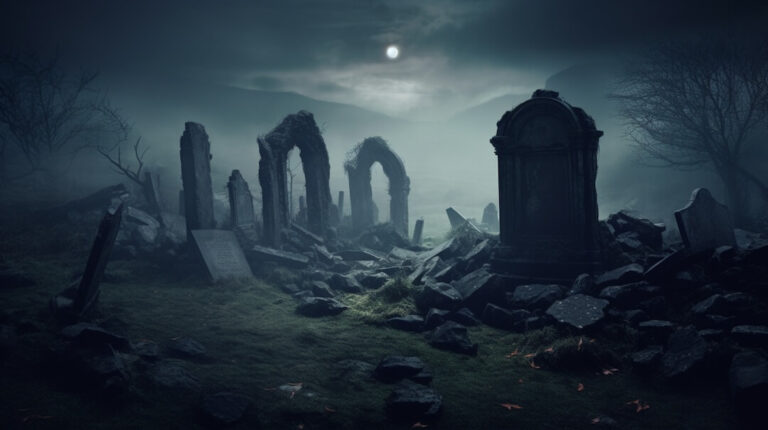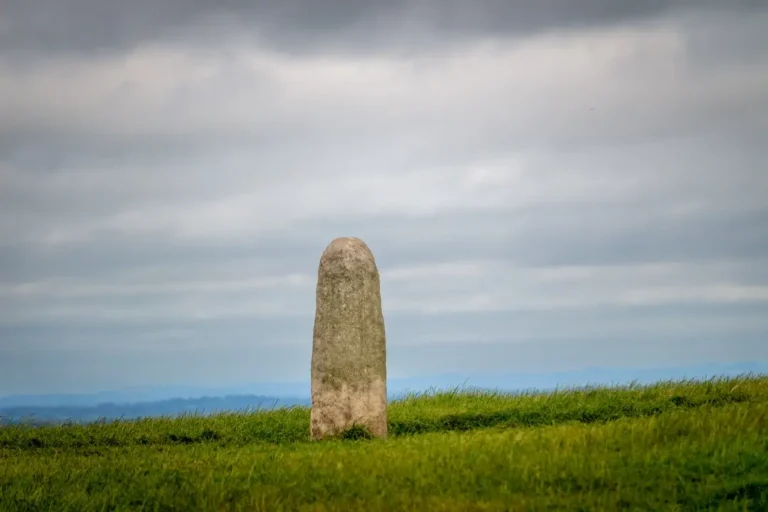The River Goddess Boann
Have you ever heard of Boann? She’s a pretty big deal in Irish mythology, especially if you’re talking about the River Boyne. Her story, the goddess boann story, is all about how this famous river came to be, and it’s got a lot of twists and turns. From forbidden wells to powerful love affairs, Boann’s tale is a classic example of ancient Irish lore, showing us how natural landmarks got their mythical origins.
Key Takeaways
- Boann is the goddess linked to Ireland’s River Boyne, a very important waterway.
- The River Boyne was created when Boann went to a forbidden well, causing a huge flood.
- Boann had a relationship with The Dagda and was the mother of Aengus Óg.
- She often shows up as a ‘white cow,’ symbolizing life and good fortune.
- Her story is still a big part of Irish culture and history.
The River Goddess Boann
Boann, often anglicized as Boyne, is a significant figure in Irish mythology. She is primarily known as the goddess of the River Boyne, a river of immense historical and cultural importance in Ireland. Her story is deeply intertwined with the landscape and the ancient beliefs of the Irish people. She is a member of the Tuatha Dé Danann, a supernatural race in Irish mythology.
Boann’s Connection to the Boyne River
Boann’s name is directly linked to the River Boyne. The name "Boann" itself is often interpreted to mean "white cow" or "divine woman." The river was believed to have been created by her, solidifying her connection to the land and its life-giving waters. The River Boyne flows through County Meath, an area rich in archaeological sites and ancient history. It is said that drinking from the Boyne river in June would grant the gifts of poetry and seership.
The Significance of the Boyne Valley
The Boyne Valley, also known as Brú na Bóinne, is a UNESCO World Heritage site and a place of immense historical and archaeological importance. It is home to several ancient passage tombs, including Newgrange, Knowth, and Dowth, which predate the pyramids of Egypt. These sites are closely associated with Boann and her mythology. The valley’s fertile lands and strategic location have made it a center of power and culture for millennia. The valley is a popular destination for Boyne Valley Tour.
Boann’s Role in Irish Mythology
Boann’s role extends beyond being just a river goddess. She is also associated with fertility, prosperity, and the power of life. In some versions of the myths, she is depicted as a white cow, a symbol of abundance and nourishment in Celtic tradition. Her story is a complex one, involving forbidden knowledge, love affairs, and the creation of the landscape itself. She is a powerful figure who embodies the forces of nature and the mysteries of the ancient world.
Boann’s story serves as a reminder of the deep connection between the Irish people and their land. Her tale is a blend of mythology, history, and symbolism, reflecting the rich cultural heritage of Ireland. She is a figure of both power and vulnerability, a goddess whose actions shaped the landscape and whose legacy continues to inspire.
The Creation of the Boyne River
The Well of Segais and its Powers
The Well of Segais was no ordinary water source; it was a place of immense power and ancient magic. Legend says it was surrounded by nine hazel trees. These weren’t just any hazel trees; they were special, imbued with wisdom. The nuts that fell from these trees into the well were eaten by salmon, which in turn gained all the knowledge and wisdom of the world. It was a cycle of knowledge, constantly renewed and protected. Only Nechtan, Boann’s husband, and his cupbearers were allowed near the well. It was forbidden to others, a rule that would soon be broken with dramatic consequences.
Boann’s Forbidden Approach
Boann, driven by curiosity or perhaps a desire to test her own power, decided to approach the Well of Segais. She knew it was forbidden, but the allure of the well’s magic was too strong to resist. One day, she ventured to the well and, in defiance of the ancient rules, walked around it tuathal, or counter-clockwise. This act was a direct challenge to the well’s power, a provocation that would unleash its fury. It was a moment of defiance that would forever change the landscape of Ireland. The River Boyne would never be the same.
The Catastrophic Flood and River Formation
Boann’s actions had immediate and devastating consequences. The waters of the Well of Segais surged upwards with incredible force, rising to meet her in a violent torrent. The water didn’t just overflow; it erupted, becoming a raging flood that swept Boann and her loyal dog, Dabilla, away. The flood carved a path across the land, transforming the landscape as it rushed towards the sea. Boann, caught in the deluge, was battered and bruised, losing an arm, a leg, and an eye in the chaos. This catastrophic event marked the birth of the River Boyne, a river born from defiance and destruction. The river’s creation is a testament to the power of the well and the consequences of challenging the ancient ways.
The creation of the Boyne is more than just a story of a river’s origin; it’s a tale of power, defiance, and the consequences of challenging the established order. Boann’s actions, driven by curiosity or ambition, unleashed a force that reshaped the land and cemented her place in Irish mythology.
Here’s a summary of the events:
- Boann approaches the Well of Segais.
- She walks around it counter-clockwise.
- The well’s waters surge and create a flood.
Boann’s Relationships and Offspring
Marriage to Nechtan
Boann’s marital life is primarily defined by her relationship with Nechtan (also sometimes referred to as Elcmar). He is often described as the king or guardian of the Well of Segais. While their marriage forms the backdrop of Boann’s story, it’s her other relationships that take center stage. It’s important to note that some accounts suggest Elcmar and Nechtan are the same person, adding a layer of complexity to the narrative. The stories don’t really go into detail about their relationship, but it’s clear that it wasn’t exactly a fairy tale, especially considering what happens next.
Affair with The Dagda
Boann is most famously known for her affair with The Dagda, a prominent figure among the Tuatha Dé Danann. This affair is a cornerstone of her mythology, leading to the birth of a significant figure in Irish lore. The Dagda, known for his power and wisdom, fathered Aengus Óg with Boann. The circumstances surrounding Aengus’s conception and birth are quite extraordinary. To conceal the affair from Nechtan, The Dagda used his magical abilities to essentially stop time, making a single day last for nine months. This allowed Boann to carry and deliver Aengus without Nechtan’s knowledge. Some people even think that Brigid, another important figure, might be her daughter, but there’s no real proof.
Mother of Aengus Óg
Aengus Óg, also known as Aengus of the Brugh, is the son of Boann and The Dagda. He is a central figure in Irish mythology, often associated with love, youth, and beauty. His birth is shrouded in magic and deception, highlighting the extraordinary nature of his parentage. Aengus’s connection to River Boyne is significant, as his mother’s story is intertwined with the river’s creation. He resides at Brú na Bóinne, a place closely linked to Boann and the Boyne Valley. Aengus is a powerful figure, known for his cunning and his ability to influence events. He’s often depicted as a handsome young man, surrounded by birds that represent the souls of lovers. He’s a pretty big deal in Irish stories, and it all goes back to Boann and The Dagda.
Boann’s role as a mother, particularly to Aengus Óg, underscores her connection to fertility and the continuation of life. Her relationships, both within and outside of marriage, highlight the complexities of ancient Irish mythology and the powerful roles that goddesses played within it.
Boann also shows up in the Táin Bó Fraích, where she helps her nephew Fráech. She gives him a bunch of cool stuff to impress Medb and Ailill, like:
- 50 fancy cloaks and tunics with animal designs
- 50 spears with shiny jewels
- 50 black horses
- 7 big dogs
Symbolism and Interpretations of Boann
The White Cow Symbolism
Boann is often depicted as a white cow, and this imagery is really important. The name Boann itself is thought to come from the word "bainne," which means milk, especially cow’s milk. In Celtic mythology, milk and water are closely linked to life and the power that gives life, so this gives Boann a special mystique. It’s not just about sustenance; it’s about the very essence of existence. The dangers and consequences of seeking forbidden knowledge are also highlighted in Boann’s story.
Association with Life and Prosperity
Boann, as the goddess of the River Boyne, is strongly tied to life, prosperity, and the passage into the next life. Rivers, in general, often have this association across different cultures, but the Boyne holds particular significance in Ireland. It’s not just a river; it’s a source of life and a connection to the otherworld. The river’s flow symbolizes the continuous cycle of birth, death, and rebirth.
Boann as a Source of Wisdom
Boann isn’t just about physical life and prosperity; she’s also connected to wisdom. Legend says that drinking from the River Boyne in June could grant the gifts of poetry and seership. This links her to the Well of Segais, where the salmon gained wisdom from eating hazelnuts. She embodies a source of knowledge and inspiration. The River Boyne is a symbol of her enduring legacy.
Boann’s story is a reminder that the pursuit of knowledge, while valuable, can have unforeseen consequences. Her actions at the Well of Segais, though driven by curiosity, led to destruction and transformation. This highlights the delicate balance between seeking wisdom and respecting boundaries.
Here are some ways Boann is associated with wisdom:
- Connection to the Well of Segais
- Granting the gifts of poetry and seership
- Association with salmon and hazelnuts, both symbols of wisdom
Boann’s Legacy and Cultural Impact
The River Boyne’s Enduring Significance
The River Boyne isn’t just a waterway; it’s a thread woven into the very fabric of Irish history and culture. Its significance stretches back millennia, from ancient mythology to pivotal historical events. The Boyne Valley, through which it flows, is home to a wealth of archaeological sites, including Newgrange, Knowth, and Dowth, megalithic monuments that predate the pyramids. These sites, intrinsically linked to Boann, highlight the river’s role as a source of life and spiritual importance since ancient times. The Battle of the Boyne in 1690 further cemented the river’s place in history, marking a turning point in Irish and British relations. Today, the Boyne continues to be a vital resource, supporting agriculture, industry, and tourism, while also serving as a powerful symbol of Irish heritage.
Boann in Modern Irish Culture
Boann’s influence extends far beyond the history books; she remains a relevant figure in modern Irish culture. While not as widely known as some other mythological figures, her story is kept alive through various channels.
- She appears in literature, often as a symbol of feminine power and the life-giving force of nature.
- Local folklore and traditions in the Boyne Valley continue to acknowledge her presence.
- Her name is sometimes invoked in artistic and spiritual contexts, reflecting a renewed interest in Celtic mythology.
Boann’s story serves as a reminder of the deep connection between the Irish people and their land. She embodies the power and beauty of the natural world, and her legacy encourages a sense of stewardship and respect for the environment.
Artistic Representations of Boann
Boann, often depicted as a beautiful woman or a white cow, has inspired artists across various mediums. These representations capture different aspects of her character and story. Some common themes include:
- Her connection to the River Boyne, often shown with flowing water and lush landscapes.
- Her association with fertility and abundance, symbolized by imagery of milk, cows, and fruitful harvests.
- Her role as a powerful goddess, portrayed with strength, wisdom, and a deep connection to the land.
These artistic interpretations help to keep Boann’s story alive and relevant, ensuring that her legacy continues to inspire future generations. You can even find nearby megalithic sites that may have been inspired by her.
The Wisdom of the Well
The Nine Hazel Trees
The Well of Segais, central to the Boann myth, wasn’t just a pool of water. It was surrounded by nine hazel trees. These weren’t ordinary trees; they were the hazels of Buan. These trees dropped their nuts into the well, and these nuts held the secrets of knowledge and wisdom.
Salmon of Wisdom
The hazelnuts that fell into the Well of Segais were consumed by salmon. These weren’t just any salmon; they were speckled salmon, imbued with the wisdom contained within the nuts. The act of eating the nuts transformed the salmon into vessels of knowledge. It’s a pretty cool image, right?
The Gifts of Poetry and Seership
Boann is associated with poetry, and legend says that drinking from the Boyne in June could grant the gifts of poetry and seership. It’s like the river itself carries the wisdom of the well, offering inspiration to those who seek it. The idea that a river can inspire art is pretty neat. The sculptures in Colpe are a modern example of this inspiration.
The well, the trees, and the salmon all work together to create a powerful symbol of knowledge and inspiration. It’s a reminder that wisdom can be found in unexpected places, and that nature itself can be a source of creativity.
Here’s a quick breakdown of the key elements:
- The Well: A source of pure knowledge.
- The Hazels: Bearers of wisdom.
- The Salmon: Living embodiments of knowledge.
- The River Boyne: A conduit for inspiration.
Ever wonder what secrets lie hidden beneath the earth’s surface? The well, a timeless source of life, holds stories of resilience and deep understanding. To uncover more fascinating insights and practical tips for your own journey, visit our website today. You’ll find a treasure trove of knowledge waiting for you.
Conclusion
So, that’s a look at Boann, the goddess tied to the River Boyne. Her story, with all its different versions, really shows how important rivers were to ancient Irish people. She’s not just some old myth; she represents life, wisdom, and even the dangers of messing with powerful forces. The Boyne itself, flowing through such historic land, still carries a bit of her story, reminding us of those old tales and how they shaped the land and its people. It’s pretty cool how these stories stick around, even today.
Frequently Asked Questions
Who is the goddess Boann?
Boann is an Irish goddess tied to the River Boyne. She’s known for creating the river and is linked to ideas like poetry, wisdom, and life itself.
How did the River Boyne get created?
The River Boyne came to be when Boann went near the magical Well of Segais. Even though she wasn’t supposed to, she walked around it in a forbidden way. This made the water burst out, sweeping her away and forming the river as it flowed to the sea.
Who were Boann’s family members?
Boann was married to Nechtan. However, she also had a relationship with the god The Dagda, and together they had a son named Aengus Óg.
What does the ‘white cow’ mean for Boann?
Boann is often called the ‘white cow,’ which is important because cows, especially white ones, were seen as symbols of life and giving in ancient Irish culture. Her connection to the river also links her to growth, wealth, and the flow of life.
Is Boann still important in Ireland today?
The River Boyne is still very important in Ireland today, not just as a natural landmark but also for its deep historical and mythical roots. Boann’s story continues to be a part of Irish folklore and art.
What was the Well of Segais?
The Well of Segais was a special place with nine hazel trees. Their nuts would fall into the well and be eaten by salmon, making both the nuts and the fish symbols of great wisdom in Irish myths.




